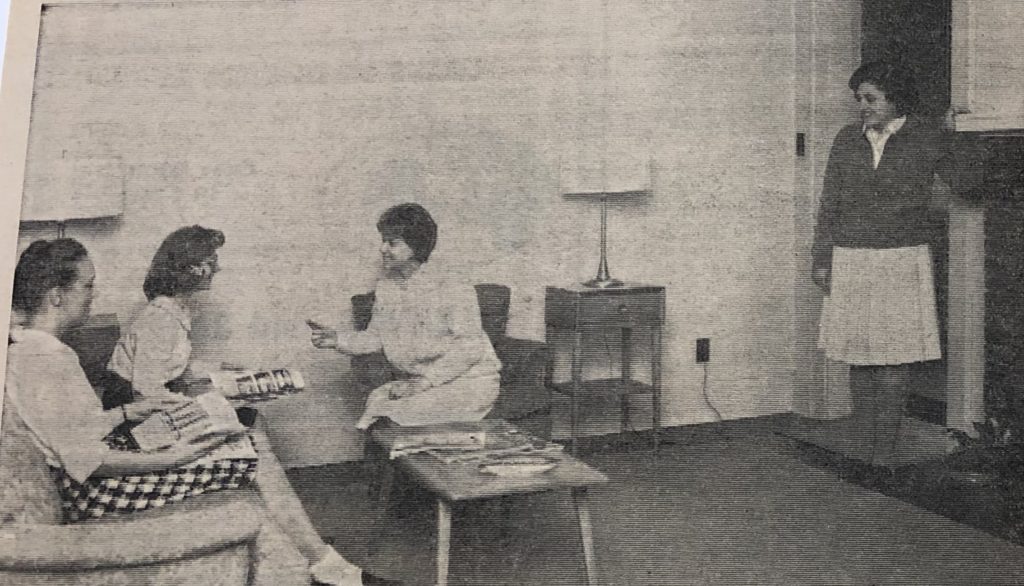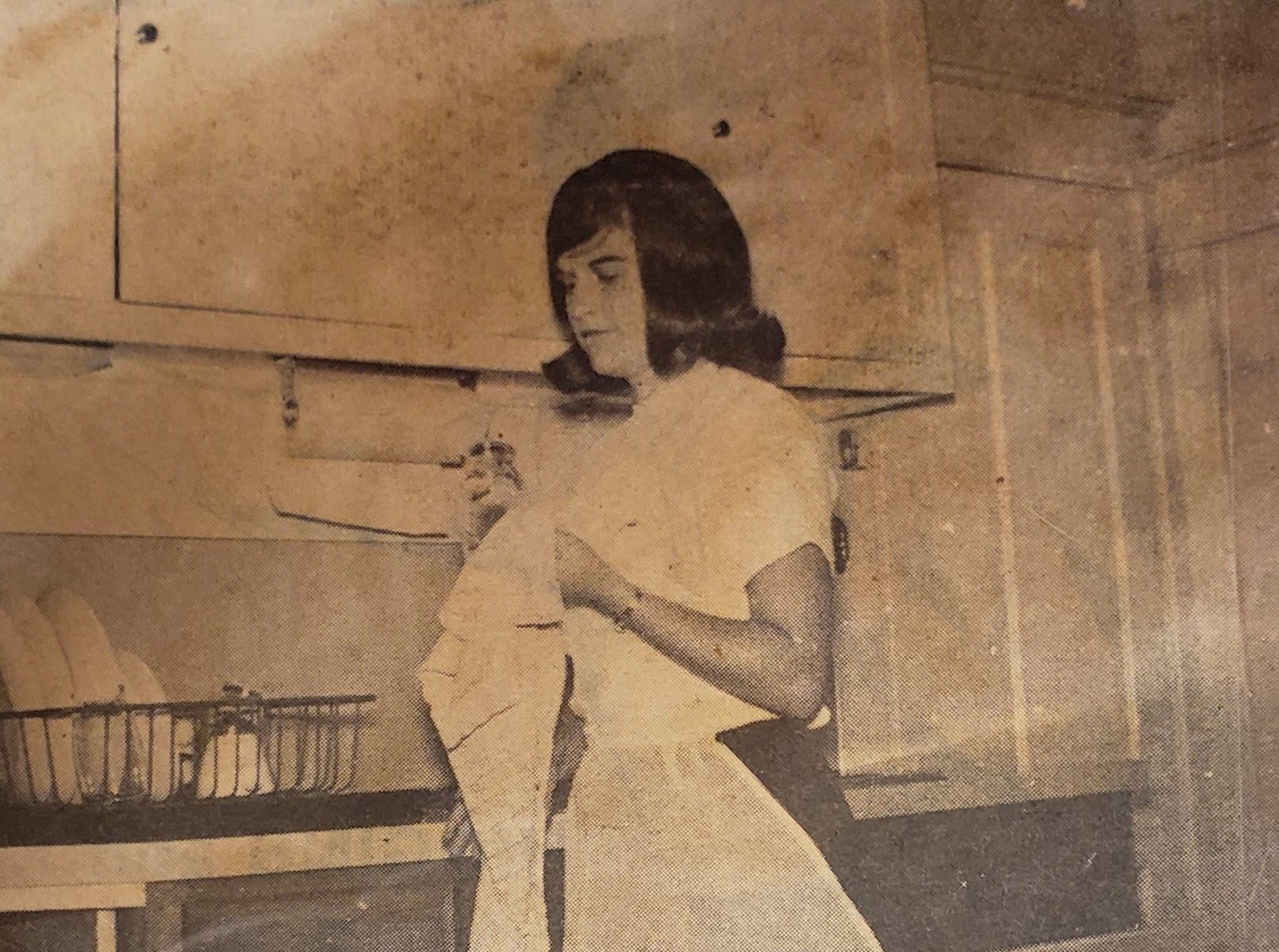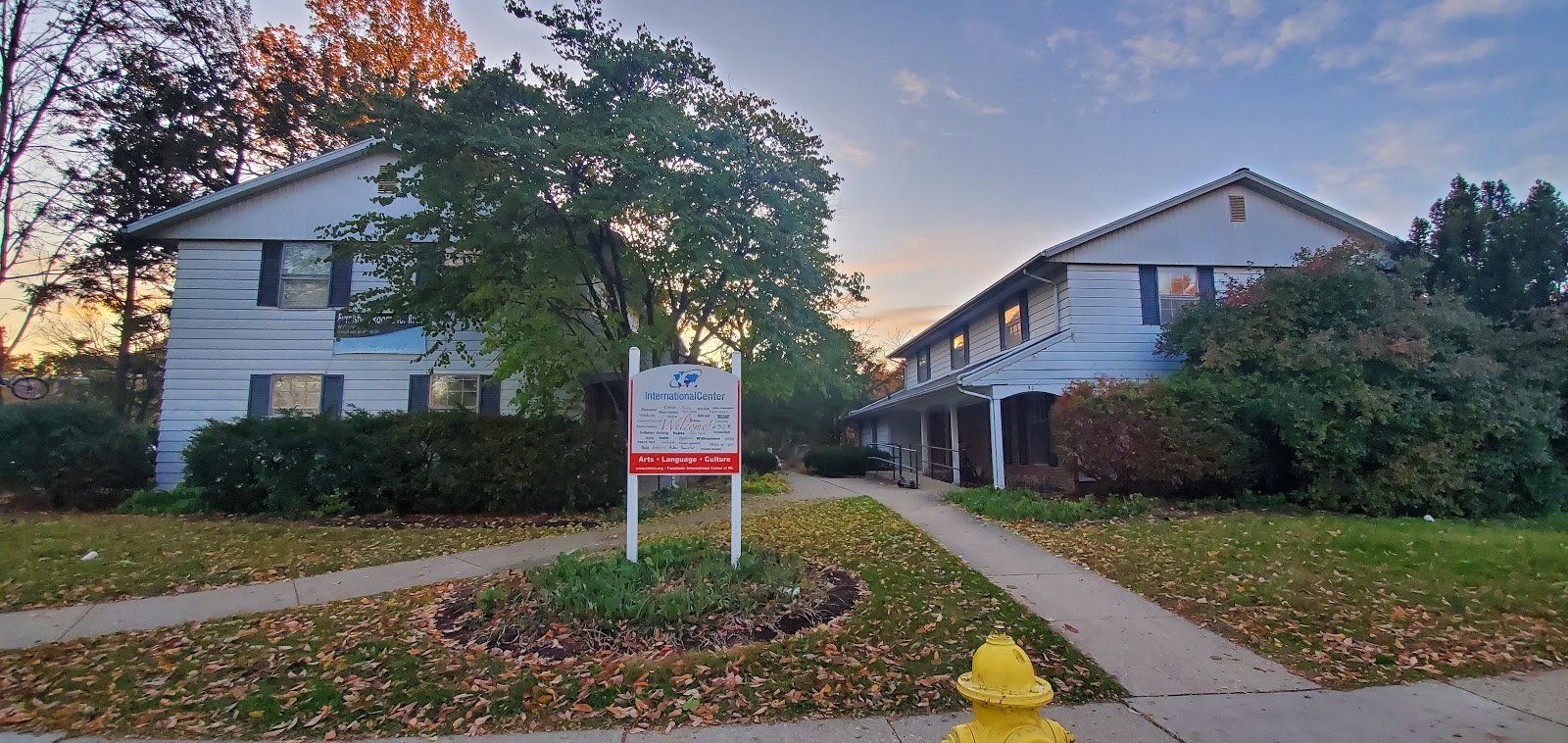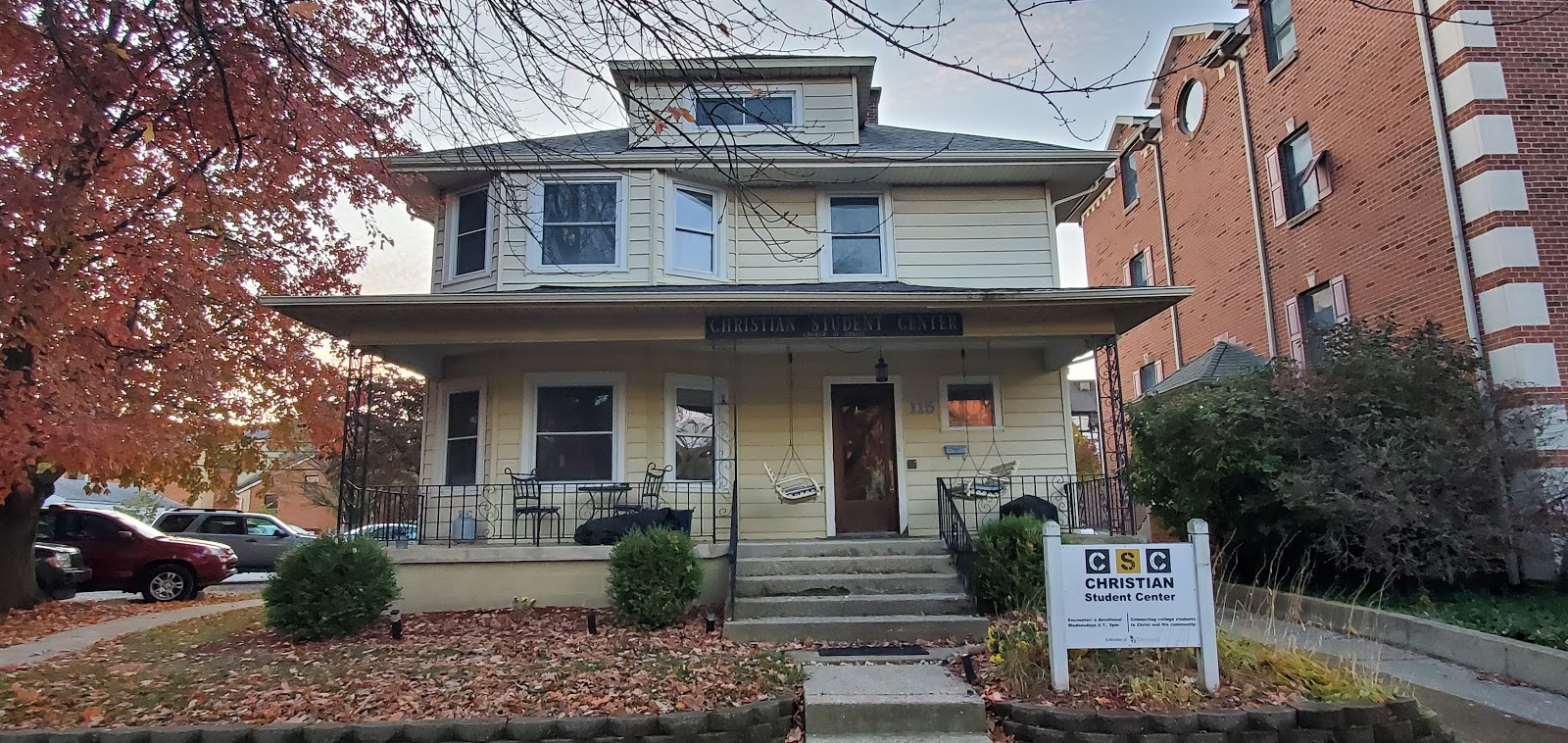Posted on October 29, 2019 by small20
Training for Domesticity
by Grant Barnett
“The most important industry in America is the management of American homes.” – President Calvin Coolidge
What is a practice house and what where they used for? Did Purdue have any and what were they like?
A practice house was a facet of many major university home economics programs, starting in Illinois in 1909. Practice houses were a place for young women, often aspiring homemakers, to put the skills they had learned into practice in the aptly named practice house. At Purdue, six girls and a supervisor. Women students throughout the country would live in a practice house for several weeks, six in the case of Purdue, and earn credit towards their degree, three credits for Boilermakers. The young women would rotate between jobs during their time at the house, cooking one week or cleaning, budgeting, decorating, or setting the table. The women would even learn about the optimal ways to move and the best ways to reduce unnecessary steps when performing common household tasks. The practice houses were no joke, and neither was the home economics degree. Real time and effort and work went into earning, teaching and researching home economics. The courses would sometimes include a child rearing segment, a practice child, in which an infant was temporarily adopted and cared for by the students. At the time the idea of a group of women acting as adopted mothers for a child was bad for the child’s development. The practice child practice was occasionally joked about and questioned on the basis that the multi-mother upbringing was not good for an infant. Others argued that the practice children were better cared for and were saved from a life of delinquency. These houses were meant to provide women with the closest possible emulation that a university could provide of typical married and domestic work that most women found themselves pre-occupied with. [1]

The Purdue practice house, or officially referred to as the Home Management House, were a series of middle-class homes used by the university to allow young women to learn about and train for domesticity. The Home Management House program was spearheaded by Professor Cleo Fitzsimmons. The program was originally hosted by the College of Consumer and Family Sciences, now known as the College of Health and Human Sciences. Young women who enrolled and were wishing to earn a home economics degree were required to participate in the six-week Home Management House program. The Purdue program most likely did not include a practice child. Often, married home economics majors would not live in the practice homes but would turn the apartments they shared with their husbands into laboratories, or their own miniature practice homes. The homes did not include the most up-to-date and advanced equipment, but rather hoped to provide a more realistic experience with middle-class equipment that would have been found in a typical home. Each of the young women would pay 45$ to participate in the class. [3]

Every girl would perform a duty for one week and then switch to another duty after that week was over. A hostess manager, who was responsible for the house and purchasing the maintenance items that were needed at the home. A food manager would make all the food purchases for a week, constrained to a budget of either 75¢ or 95¢, which is approximately $6 to $9 in 2019. There was also an assistant food manager, who helped the food manager. The housekeeper and the assistant housekeeper would take care of the general cleaning. Lastly, there was a waitress who would help to serve the food, making sure that the table was set and that all the needs of the other girls were taken care of during mealtimes. The house was used to provide women with a laboratory to put their studies to practice. This was all done while the students performed other course work and lived normal university lives. The students were expected to balance social, work, and home lives during their time in the practice house. [5]
![“Stronger than Dirt – Barb Haselby, Alpha Xi Delta, gives the living room of Home Management House #1 a thorough cleaning.” [6]](https://ascblogs.lib.purdue.edu/fall2019-honors49900/wp-content/uploads/sites/3/2019/10/20191015_134405-1.jpg)
![“Bubble Trouble – After the dinner clean-up is quickly taken care of as Barb washes the dishes.” [6]](https://ascblogs.lib.purdue.edu/fall2019-honors49900/wp-content/uploads/sites/3/2019/10/20191015_134328.jpg)
![“Let’s Go Krogering – Barb gets first-hand experience in selecting quality meats for the house” [6]](https://ascblogs.lib.purdue.edu/fall2019-honors49900/wp-content/uploads/sites/3/2019/10/20191015_134335.jpg)
![“A Pretty Table – Bonnie Ritchie, Sulphur Springs, sets up an attractive table in the dining room of Home Management House 2 at Purdue University.” [5]](https://ascblogs.lib.purdue.edu/fall2019-honors49900/wp-content/uploads/sites/3/2019/10/20191022_135701.jpg)
![“All Set – As dinner time approaches, Barb prepares the table for hungry Home Management Girls” [6]](https://ascblogs.lib.purdue.edu/fall2019-honors49900/wp-content/uploads/sites/3/2019/10/Picture3.png)
Purdue operated four practice houses. The houses were typical for the time period, they were not exceptionally new, modern, or large. The Home Management courses were meant to serve as practice for a middle-class life and the Home Management houses reflected the intention of their courses. Purdue rented several of the houses and eventually built two of its own. The rented houses are no longer standing and were located where Honors South and the Farmhouse fraternity now sit. There are very few records about these rented houses, except their locations on old university maps and a few photos. The four rental houses stood at: #1(Home Management House No. 1, etc.) 1110 State Street, West Lafayette; #2 1111 First Street, West Lafayette; #3 1110 First Street, West Lafayette; #4 1111 Second Street, West Lafayette. [7]

The three practice homes that are still standing and two are still owned by the university. The two homes that university still owns now host the Purdue International Center, Office, Classroom, and Co-Op. The two houses are located at 523 and 525 N. Russell Street, West Lafayette. [9] The other home hosts the Christian Student Center and is located at 115 Waldron Street, West Lafayette.
The Home Management program seems to have ended in 1979, as this is the last date mentioned in reference to the Home Management houses or practice houses. I was unable to find any documentation of the decision to end of the program. The closing of the Home Management program in the late 70’s seems to be in line with the changing attitudes of women at the time, with less and less women preparing for a life of domesticity. Women had been and were branching out of the “women’s majors” in a big way, my mother included. It follows that fewer women were looking for non-career-oriented education and strayed away from home economics and the practice houses of their mothers. This effectively killed the practice houses as they were known and killed off a now dead area of study. The practice houses are a very real, concrete, example of the role that women were and are expected to play in society today. The houses were a training grounds for marriage and were often looked at that way. The Columbia Teacher’s College even had a group of single male professors who offered 250 dollars a year to one of the participating women, on the requirement that she marry one of the donors. The houses may have outwardly had been promoted as a necessary part of a home economics education, that was often marketed as career friendly, but they did little more than to serve as training grounds for a life of complacently efficient domesticity. [10]
- Megan Elias, “’Model Mamas’: The Domestic Partnership of Home Economics Pioneers Flora Rose and Martha Van Rensselaer,” Journal of the History of Sexuality 15, no. 1 (2006): 65-88; Megan Elias, Stir It up: Home Economics in American Culture (Philadelphia: University of Pennsylvania Press, 2008); P-House Keeps Home-Ec Students Up to Date, 1965-1966, Purdue Home Management Items and Bulletins, 1900s-1966, College of Health and Human Sciences records, UA 15, Box 4, Purdue University Archives and Special Collections; P-Houses Train Home-Ec Majors by Experience, 1960, ibid.
- Article: Practice What They’ve Learned, 1965-1966, Purdue Home Management Items and Bulletins, 1900s-1966. College of Health and Human Sciences records, UA 15, Box 5. Purdue University Archives and Special Collections.
- Article: P-House Keeps Home-Ec Students Up to Date.; Article: Practice What They’ve Learned, 1966, Purdue Home Management Items and Bulletins, 1900s-1966. College of Health and Human Sciences records, UA 15, Box 5. Purdue University Archives and Special Collections.; Article: House Keeps Home Economic Students up to Date, 1966, Purdue Home Management Items and Bulletins, 1900s-1966. College of Health and Human Sciences records, UA 15, Box 5. Purdue University Archives and Special Collections.; Article: New Home Ec House Slated for Construction, 1967, Purdue Home Management Items and Bulletins, 1900s-1966. College of Health and Human Sciences records, UA 15, Box 5. Purdue University Archives and Special Collections.; Article: P-Houses Train Home-Ec Majors by Experience.
- Article: Practice What They’ve Learned.
- Article: P-House Keeps Home-Ec Students Up to Date.; Article: Practice What They’ve Learned.; Article: House Keeps Home Economic Students up to Date.; Article: New Home Ec House Slated for Construction.; Article: P-Houses Train Home-Ec Majors by Experience.; Collins, Gail. When Everything Changed: the Amazing Journey of American Women from 1960 to the Present. New York: Little, Brown and Co, 2014.; “Inflation Rate between 1969-2019: Inflation Calculator.” $0.95 in 1969 → 2019 | Inflation Calculator. Accessed 2019.
- Article: House Keeps Home Economic Students up to Date, 1965, Purdue Home Management Items and Bulletins, 1900s-1966. College of Health and Human Sciences records, UA 15, Box 5. Purdue University Archives and Special Collections
- Photo: 50 Year Bulletin Home Management House, 1965, Purdue Home Management Items and Bulletins, 1900s-1966. College of Health and Human Sciences records, UA 15, Box 5. Purdue University Archives and Special Collections.
- Article: New Home Ec House Slated for Construction; International Center Office/Classroom Building, Purdue Campus Facilities and Buildings Historic Database. Accessed 2019; International Center Co-op House, Purdue Campus Facilities and Buildings Historic Database. Accessed 2019.
- International Center Office/Classroom Building; International Center Co-op House.; Collins, Gail. When Everything Changed: the Amazing Journey of American Women from 1960 to the Present. New York: Little, Brown and Co, 2014.
Banner Image Reference in bold.


